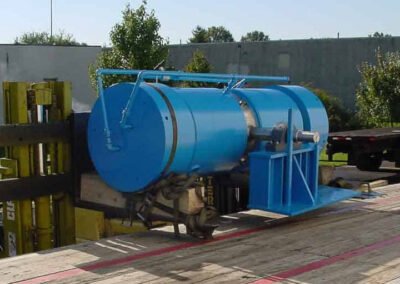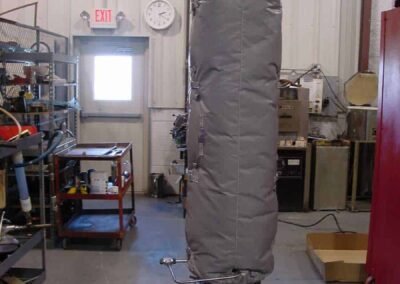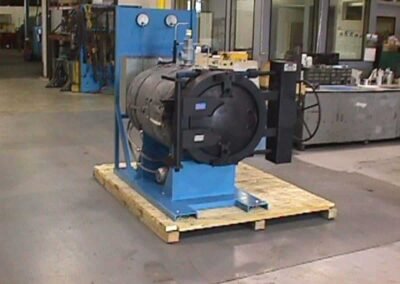Designing Pressure Vessel Requires Expertise


Pressure vessels hold significant importance across a spectrum of industries, spanning petrochemicals, energy, pharmaceuticals, and aerospace. These vessels are pivotal in securely containing gases and liquids under high pressure, a necessity for various industrial operations. Designing and engineering these vessels are intricate tasks that necessitate specialized proficiency from mechanical engineers and pressure vessel designers. Their expertise guarantees safety, efficiency, and adherence to strict industry standards. This article delves into the essential considerations in developing optimal pressure vessels and underscores the necessity of seeking skilled guidance in this complex domain.
1. Grasping Pressure Vessels: Pressure vessels function as containers for gases or liquids at pressures far surpassing atmospheric levels. These vessels adopt diverse forms and dimensions, encompassing cylinders, spheres, horizontal or vertical tanks. Their applications encompass storing chemicals, processing fluids, generating steam, and catalyzing chemical reactions.
2. Prioritizing Safety: The central focus in pressure vessel design is safety. The malfunction of a pressure vessel can yield catastrophic outcomes, ranging from explosions to leaks of corrosive substances that could inflict harm on individuals and property. Consequently, rigorous regulations, codes, and standards exist to guarantee proper design, construction, inspection, and testing of these vessels.
3. Material Choice: The selection of materials for pressure vessel fabrication is of paramount significance. Material choices hinge on factors like the nature of contained fluid or gas, operating conditions (pressure and temperature), and requirements for corrosion resistance. Typical materials encompass carbon steel, stainless steel, aluminum, and diverse alloys. For instance, hydrogen compressor manufacturers employ adept engineers with a focus on design and materials.
4. Adherence to Codes and Standards: Crafting a closed loop CO2 extraction system necessitates adherence to industry-specific codes and standards, such as the ASME Boiler and Pressure Vessel Code and the European Pressure Equipment Directive (PED). These codes provide exhaustive guidelines for the secure design, production, and operation of pressure vessels, guaranteeing consistency and reliability in their performance.
5. Stress and Finite Element Analysis (FEA): Stress analysis stands as a pivotal facet of pressure vessel design. Engineers leverage analytical methods and Finite Element Analysis (FEA) to evaluate the stress and deformation that pressure vessels might undergo under varying operational conditions. This analysis guarantees the vessel's capability to withstand projected loads and pressures without compromising safety.
6. Thermal Appraisal: Pressure vessels frequently experience temperature fluctuations during operation. Thermal analysis assumes paramount importance in comprehending the influence of temperature changes on structural integrity and material characteristics. Proficient thermal design is indispensable to avert concerns like thermal stress and fatigue, which could jeopardize the vessel's durability.
7. Design Enhancement: Optimizing pressure vessel design constitutes a delicate equilibrium between performance, cost-effectiveness, and safety. Accomplished engineers weigh considerations such as material choice, geometry, and fabrication techniques to attain a design that fulfills performance prerequisites within budgetary confines.
8. Manufacturing-Centric Design: Streamlined manufacturing is pivotal in pressure vessel design. Engineers must ascertain that the vessel's design aligns with prevailing manufacturing methods and tools while guaranteeing precision in dimensions and consistent quality.
9. Tailoring to Specific Applications: Pressure vessels often undergo tailoring for distinct industrial applications. Each sector may possess unique requisites, like lightweight materials for aerospace or heightened corrosion resistance for chemical processing. Proficiency in customizing pressure vessel design ensures alignment with the precise needs of the intended application.
10. Non-Destructive Testing (NDT): Non-destructive testing methods are harnessed during fabrication and periodic inspections to identify flaws or defects within pressure vessels without inflicting damage. NDT fosters the integrity and longevity of pressure vessels over their operational lifespan.
11. Sustained Maintenance and Life-Cycle Management: Expertise in pressure vessel design extends beyond initial construction. Engineers consider prolonged maintenance and life-cycle management, encompassing inspection timetables, repair protocols, and criteria for retiring or replacing the vessel.

Devising the optimal pressure vessel is a multifaceted and pivotal endeavor reliant on specialized competence. Safety, regulatory compliance, and optimal performance emerge as paramount concerns, with any design compromise carrying substantial repercussions. Proficient ASME pressure vessel manufacturers equipped with profound comprehension of material science, stress analysis, thermal considerations, and industry benchmarks remain indispensable in fabricating reliable and efficient pressure vessels. As technology and industrial requisites continue to evolve, the role of expertise in pressure vessel design remains indisputable in ensuring the security and prosperity of varied industrial processes.
Aprovecha el primer dia del concurso de la comunidad Colombia Original sobre el tema “Cambio Climático. Aquí el link. https://steemit.com/hive-113376/@colombiaoriginal/sec-s11w5-cambios-climaticos-en-el-mundo